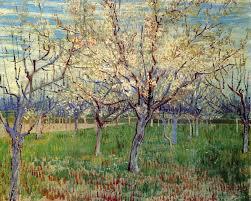vincent van gogh famous failures
5 min read
Vincent van Gogh: Embracing Failure on the Path to Mastery
vincent van gogh famous failures.Vincent van Gogh is a name that resonates with art lovers around the world. Known for his vivid colors and emotional depth, he remains one of history’s most celebrated painters. However, what often gets overlooked are his many struggles and failures along the way. Behind those stunning masterpieces lies a story of persistence in the face of adversity—a tale that reveals how failure can be an essential stepping stone toward mastery.
From early rejections to moments of self-doubt, van Gogh’s journey was anything but smooth. Yet each setback shaped his artistry, allowing him to evolve into the genius we recognize today. Join us as we explore Vincent van Gogh’s famous failures—the trials and tribulations that ultimately paved the path for his remarkable legacy in modern art.
The Early Life of Vincent van Gogh
Vincent van Gogh was born on March 30, 1853, in the Netherlands. He grew up in a religious family; his father was a minister. This early environment instilled strong values and a sense of purpose.
As a child, Vincent struggled to fit in. He was introverted and sensitive, often finding solace in nature rather than social interactions. Art became an outlet for him during these formative years.
At 16, he started working at an art dealership called Goupil & Cie. Exposure to various artworks sparked his interest but didn’t ignite his passion just yet. His career would take unexpected turns before he truly embraced painting as his calling.
After leaving the firm and trying various jobs—including teaching and working as a lay preacher—Vincent finally picked up the brush seriously around the age of 27. Little did he know that this decision would lead him down an extraordinary path filled with ups and downs.
His Struggle to Find Success as an Artist
Vincent van Gogh faced numerous challenges in his quest to be recognized as an artist. Despite his immense talent, he struggled to gain acceptance within the art community.
Early on, he experimented with different styles and subjects but often found himself at odds with prevailing tastes. Gallery rejections became a familiar part of his journey. Each letter turned down felt like another blow to his aspirations.
He worked tirelessly, creating hundreds of paintings, yet remained largely unknown during his lifetime. Van Gogh’s reliance on financial support from family added pressure and anxiety.
His emotional struggles compounded the difficulty of finding success. Loneliness and self-doubt haunted him, making it hard to stay focused on his passion for painting.
These obstacles did not deter him; they fueled the fire within him instead, pushing him toward mastery even when recognition seemed out of reach.
Embracing Failure: How Van Gogh’s Art Evolved
Vincent van Gogh’s journey as an artist was anything but smooth. Early on, he faced rejection after rejection. Gallery owners and critics often dismissed his work, leaving him disheartened yet determined.
Rather than succumbing to despair, Van Gogh used these setbacks as fuel for growth. Each brushstroke became a testament to resilience. He experimented boldly with color and technique, pushing boundaries that many dared not cross.
His famous “Starry Night” emerged from this willingness to embrace failure. The swirling skies were born from emotional turmoil rather than perfectionism. This raw expression connected deeply with viewers.
Van Gogh found beauty in the struggle itself. By accepting failure as part of his artistic process, he transformed it into something remarkable—a unique voice that echoed through time and still resonates today.
The Importance of Persistence and Perseverance
Persistence and perseverance stand as pillars of Vincent van Gogh’s journey. He faced countless rejections, yet each setback only fueled his passion further.
Art is often a reflection of life’s struggles. Van Gogh’s commitment to honing his craft showcases the profound impact of resilience. Despite financial hardships and mental health battles, he painted with fervor, pouring emotion into every stroke.
Each canvas was a testament to his unwavering spirit. For him, failure was not an endpoint but rather a stepping stone toward mastery. His ability to rise after defeat inspired others in the artistic community.
Van Gogh taught us that greatness requires tenacity. The road may be fraught with challenges, but it is persistence that transforms dreams into reality, reminding us that even the most celebrated artists faced their share of obstacles along the way.
Legacy of Van Gogh’s Work and Influence on Modern Art
Vincent van Gogh’s legacy is a vibrant tapestry woven into the fabric of modern art. His bold use of color and expressive brushwork paved the way for new artistic movements. Impressionism and Post-Impressionism drew heavily from his unique vision.
Contemporary artists continue to find inspiration in Van Gogh’s fearless exploration of emotion through painting. His ability to convey deep feelings resonates today, encouraging countless creators to embrace vulnerability in their work.
Moreover, Van Gogh’s life story fuels the narrative around creativity and mental health. Artists often relate to his struggles, finding solace in knowing that failure can lead to profound beauty.
Museums around the world celebrate his masterpieces, ensuring that each generation discovers his genius anew. The swirling skies of “Starry Night” or sunflowers bursting with color remind us all how passion transforms pain into something extraordinary.
Lessons Learned from Van Gogh’s Journey to Mastery
Vincent van Gogh’s journey teaches us that failure is not the end, but a stepping stone. Each rejection he faced shaped his artistic identity. Instead of succumbing to despair, he transformed setbacks into opportunities for growth.
His relentless experimentation reminds us to embrace our unique styles. Van Gogh painted with raw emotion and bold colors, pushing boundaries in ways few dared at the time. This willingness to innovate can inspire artists and creators alike.
Moreover, his unwavering dedication highlights the value of persistence. Van Gogh spent years refining his craft despite minimal recognition during his lifetime. His story encourages us to keep pursuing our passions even when success feels elusive.
Vulnerability played a crucial role in his artistry. By exposing himself emotionally through art, he connected deeply with others—a reminder that authenticity resonates more than perfection ever could.
Conclusion
Vincent van Gogh’s life story is a testament to the power of perseverance in the face of adversity. His journey was marked by struggles and setbacks, yet he continued to push through with relentless passion for his craft. The famous failures that shaped him not only refined his artistic skills but also contributed to the richness of his legacy.
Through every rejection and disappointment, Van Gogh learned valuable lessons about resilience. He transformed pain into beauty, creating masterpieces that continue to inspire countless artists today. His bold use of color and emotive brushwork broke conventional boundaries, paving the way for modern art movements.
Van Gogh’s influence extends beyond just technique; it reminds us all that failure is often an essential component of success. Artists and creators can draw strength from his experiences as they navigate their own journeys. By embracing obstacles instead of fearing them, we honor Van Gogh’s memory and learn how to carve our unique paths.
His life serves as a powerful reminder: mastery comes from deep commitment, persistence in practice, and a willingness to embrace every setback along the way. In celebrating Vincent van Gogh’s famous failures, we celebrate growth—both personal and artistic—and recognize that greatness often emerges from struggle.




